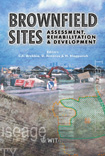The Contribution Of The Reuse Of Historic Naval And Airforce Sites To Brownfields Regeneration: Filling In The ‘white Holes’
Price
Free (open access)
Transaction
Volume
55
Pages
Published
2002
Size
676 kb
Paper DOI
10.2495/BF020101
Copyright
WIT Press
Author(s)
C. Clark
Abstract
The contribution of the reuse of historic naval and airforce sites to brownfields regeneration: filling in the ‘white holes’ C. Clark University of Portsmouth, UK Abstract Historic naval, military and airforce sites are a specialised subset of brown land, absent from civilian maps. Once the focus of national history, they are of particular importance to the future of local communities, which may have been dominated by the ebb and flow of war and peace for centuries. Regeneration of local economies may depend on new land uses on them. Systems of disposal of government owned assets: at minimum price, low cost, or market value, affect outcomes such as land uses, historic buildings reuse and employment, in positive and negative ways. Local communities may be partners in the reuse process, or excluded from decision-making. Adaptation proposals also need to be measured against various conservation criteria and degrees of physical intervention. Regulatory regimes for the protection of historic sites and structures which vary from country to country may inhibit or enable their future survival. There are also particular values and meanings associated with historic sites of national defence which need to be respected in beneficial reuse. Twentieth century buildings are regarded as heritage in some countries, but not in others. This paper draws on experience of reuse of historic naval, military and airforce sites in Europe and the US, examining the issues raised and the contribution of the reuse of large structures such as boatsheds, covered slips, and flying boat sheds to regeneration of local employment and economies deeply affected by defence cuts, and in search of a new future.
Keywords




